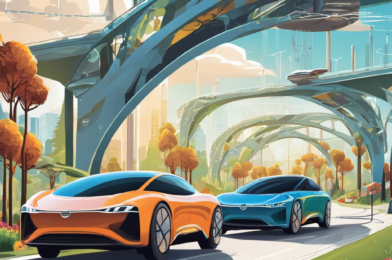The world of education is undergoing a rapid transformation as innovative technologies are increasingly being integrated into classrooms. These new tools are shaping how students learn and interact with their peers and instructors, leading to enhanced knowledge retention and a more engaging educational experience overall.
One notable tech trend in education is the use of virtual reality (VR) and augmented reality (AR). VR and AR technologies offer immersive learning experiences that can transport students to different environments and contexts, making abstract concepts more tangible and understandable. For instance, students can explore historical events firsthand, interact with 3D molecular structures in chemistry, or even experience spacewalks without leaving the classroom.
Adaptive learning software is another innovation gaining traction in education. These programs use algorithms to tailor instructional content and strategies to each student’s unique needs. By adapting to an individual’s learning pace and providing personalized feedback, these platforms enhance knowledge retention and help students develop a deeper understanding of the material. This level of customization was previously difficult to achieve in a traditional classroom setting.
Online learning platforms have also revolutionized education by making high-quality educational resources accessible to anyone with an internet connection. Students can now enroll in courses from top universities worldwide, learn from industry experts, and collaborate with peers across the globe. This has led to a more democratized education system where spatial and temporal constraints are no longer barriers to acquiring knowledge.
Additionally, educational gaming is becoming an increasingly popular way to engage students in learning. By incorporating game-like elements such as challenges, storylines, and rewards, educators can increase student motivation and encourage active participation in the learning process. This approach helps students develop problem-solving skills, creativity, and persistence.
Furthermore, technology has played a pivotal role in accommodating diverse learning styles and promoting inclusivity in education. For example, text-to-speech tools assist students with dyslexia or visual impairments, while interactive multimedia resources cater to kinesthetic learners. These advancements ensure that all students have equal opportunities to excel and achieve their academic goals.
The impact of technology on education is undeniable, and we are likely to see even more innovative tools and approaches in the future. As technology continues to evolve, educators must stay agile and embrace these advancements to create dynamic and inclusive learning environments that prepare students for a technology-driven world.
Lastly, it is essential to recognize the potential challenges and pitfalls of integrating technology into education. Ensuring equal access to technological resources for all students, regardless of socioeconomic status, is crucial to avoiding digital inequality. Additionally, educators must address potential digital distractions and ensure that technology enhances, rather than hinders, students’ focus and information retention. Responsible and thoughtful integration of technology into education is key to harnessing its full potential.






